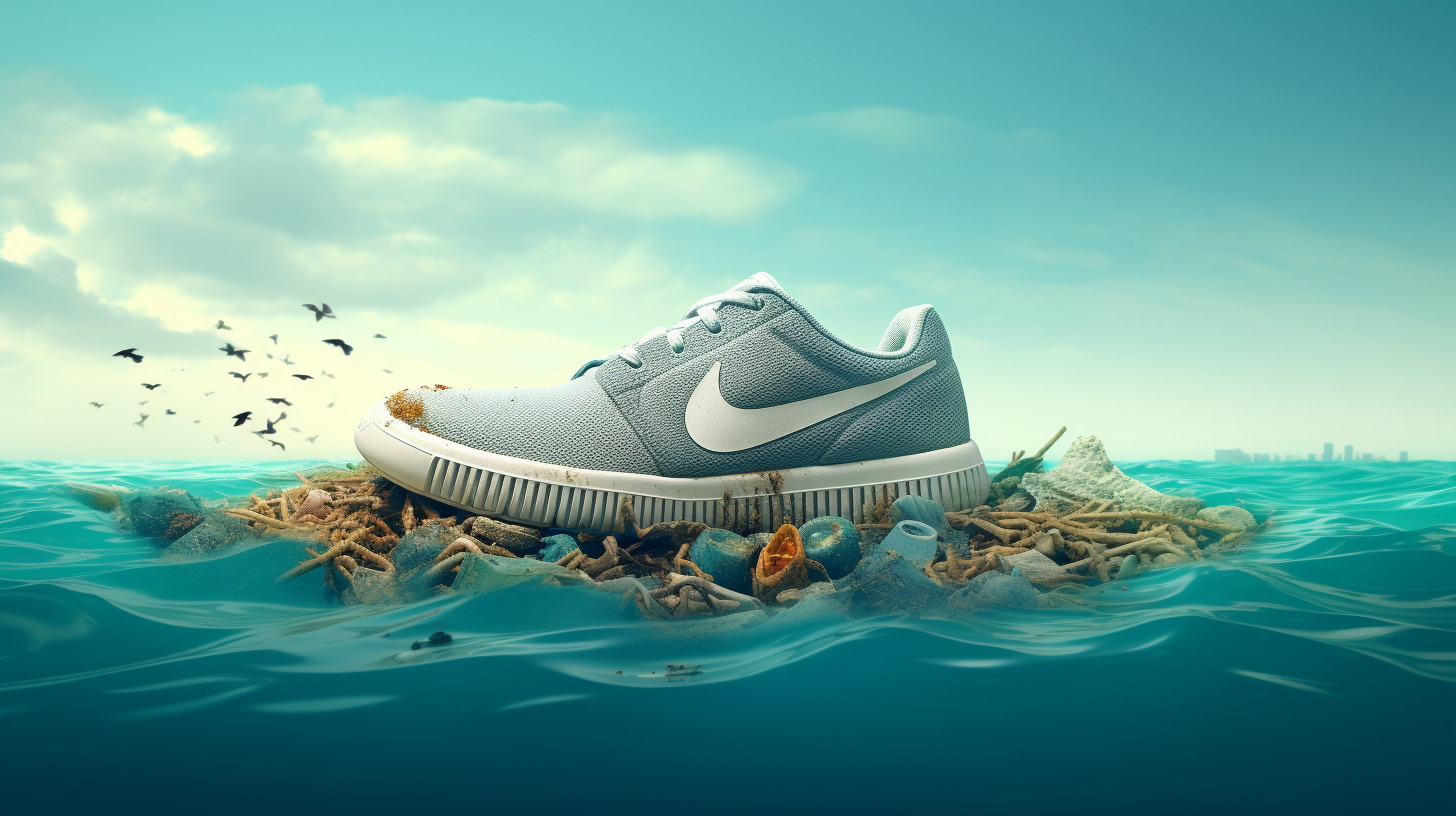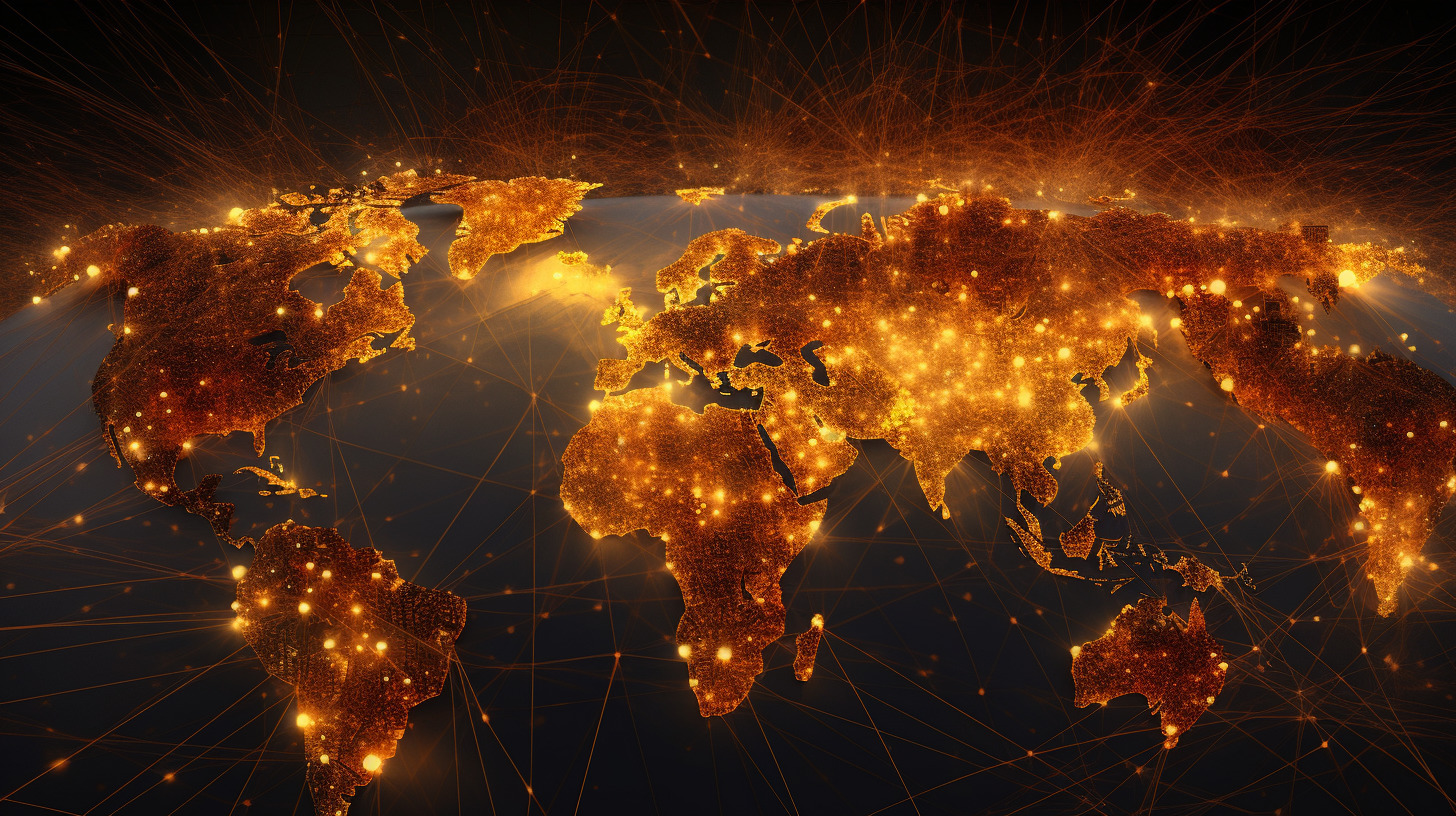Introduction
World Oceans Day is a global observance that celebrates our beautiful oceans and raises awareness about the threats they face. It’s a day when people worldwide host events to promote ocean conservation and sustainability. This year, we’re highlighting a golden connection that has not only contributed significantly to ocean conservation but has also redefined the landscape of sustainable footwear. We’re talking about the collaborative efforts of two of the biggest brands in the world, Nike and Adidas.

1. The Concept of Golden Connections
Before we dive into our story, let’s explain what we mean by a ‘Golden Connection’. It’s a term we use at Unicorn Universe to describe powerful collaborations that yield exponential benefits for all parties involved. Golden Connections create transformative change, drive growth, and often, as in this case, have far-reaching positive impacts on the world. They’re about aligning missions, leveraging resources, supporting each other’s strengths, and compensating for weaknesses. The whole is greater than the sum of its parts in a Golden Connection.
2. The Golden Connection: Collaboration for a Cause
2.1. Aligning for Sustainability
On the surface, Nike and Adidas are rivals. They’re two giants in the sporting goods industry, continuously striving to outdo each other in creating the most innovative, stylish, and functional athletic gear. However, they share a common understanding of the urgent need for sustainability in their industry. Recognizing this common goal, they made a landmark decision to set aside their rivalry. They aligned their missions and pooled their resources to address a massive environmental issue: ocean pollution.
2.2. Materializing the Golden Connection: Sustainable Footwear from Ocean Plastic
The project they embarked on was nothing short of remarkable. Capitalizing on their strengths in innovation and design, Nike and Adidas started creating stylish, sustainable footwear. But these weren’t your typical ‘green’ shoes. They were made from plastic bottles retrieved from the oceans. It was a brilliant idea, taking a substance that was harming marine life and transforming it into something valuable and desirable.
3. Making it a Success
3.1. Complementing Strengths and Resources
The golden connection between Nike and Adidas was successful primarily due to their complementary strengths. Nike’s expertise in product innovation and performance technology was a perfect match for Adidas’s prowess in style and branding. They also leveraged each other’s extensive resources, from research and development capabilities to distribution networks, to make the project a success.
3.2. Public Engagement and Awareness
Part of the success of this project hinged on raising public awareness. The collaboration was not just about making sustainable footwear. It was also about drawing attention to the issue of plastic pollution in our oceans. By promoting the project and engaging with their audiences, Nike and Adidas raised awareness about the need for ocean conservation.
4. The Impact of the Golden Connection

4.1. Economic and Environmental Impacts
The golden connection between Nike and Adidas has generated billions in revenue, validating the substantial economic potential of sustainable products. The global market for sustainable footwear is expected to reach $13.3B by 2030, demonstrating the business case for sustainable practices. But the impact goes beyond financial metrics. By repurposing ocean plastic for their products, Nike and Adidas have contributed to reducing ocean pollution, benefiting marine life and ecosystems.
4.2. Setting a Precedent for Other Industries
The collaboration between Nike and Adidas has broader implications too. It sends a powerful message to businesses worldwide: rivalry need not stand in the way of collaboration for a greater cause. The success of this project serves as an inspiring precedent for other industries. It shows that businesses can and should collaborate to tackle global challenges, and that doing so can be beneficial for all parties involved.
5. The Lessons from Nike and Adidas’ Golden Connection
5.1. Collaborations Can Drive Innovation and Growth
Golden Connections can drive innovation, as seen in the creation of sustainable footwear made from ocean plastic. Moreover, they can foster growth, with the sustainable footwear market poised to reach $13.3B by 2030. The collaborative effort of Nike and Adidas demonstrates how Golden Connections can lead to novel solutions and significant market opportunities.
5.2. Shared Missions Can Overcome Rivalries
Rivalries are commonplace in business. However, the example of Nike and Adidas shows that common goals can transcend competition. Their shared mission of sustainability allowed them to see past their rivalry and work together for the greater good. The lesson here is that shared values and missions can create a fertile ground for Golden Connections.
5.3. Businesses Have a Role in Addressing Global Challenges
Lastly, the Golden Connection between Nike and Adidas underscores the significant role businesses can play in addressing global issues. Businesses wield considerable resources and influence, and collaborations like this one demonstrate how these can be utilized for positive change.
Conclusion
The Golden Connection between Nike and Adidas is a compelling example of how powerful collaborations can generate significant economic and societal value. It serves as a testament to the transformative potential of Golden Connections and their capacity to drive innovation, growth, and positive change. It’s a story of how shared missions can bridge rivalries, how collaboration can fuel innovation and growth, and most importantly, how businesses can play a crucial role in addressing global challenges.

FAQs
1. What is a Golden Connection?
A Golden Connection is a powerful collaboration that yields exponential benefits for all parties involved. It’s about aligning missions, leveraging resources, and complementing strengths and weaknesses.
2. How did Nike and Adidas collaborate?
Nike and Adidas collaborated to create sustainable footwear made from plastic bottles retrieved from the oceans. They leveraged each other’s strengths and resources to make the project a success.
3. What was the impact of the collaboration between Nike and Adidas?
The collaboration generated billions in revenue and contributed to reducing ocean pollution. It also set a precedent for other industries to collaborate in addressing global challenges.
4. What lessons can we learn from Nike and Adidas’ collaboration?
The Golden Connection between Nike and Adidas teaches us that collaborations can drive innovation and growth, shared missions can overcome rivalries, and businesses can play a significant role in addressing global challenges.
5. Can other businesses emulate this Golden Connection?
Absolutely! The collaboration between Nike and Adidas serves as a precedent for other businesses. It shows that aligning missions and pooling resources can lead to successful collaborations and significant impacts.
Who is your Golden Connection?
Are you inspired by the Golden Connection between Nike and Adidas? Do you want to create your own Golden Connection to drive growth and positive change? We can help. Schedule a Golden Connection Strategy Session with us today and discover how you can forge powerful collaborations for your business and the world.

